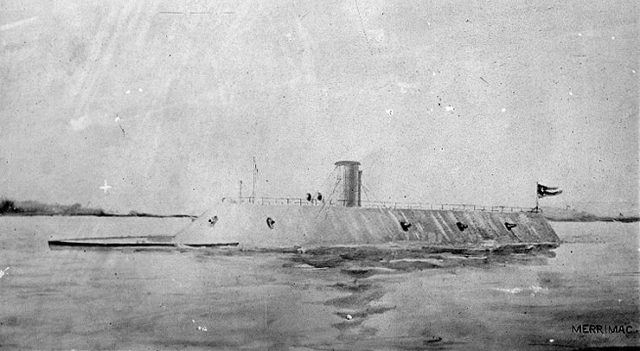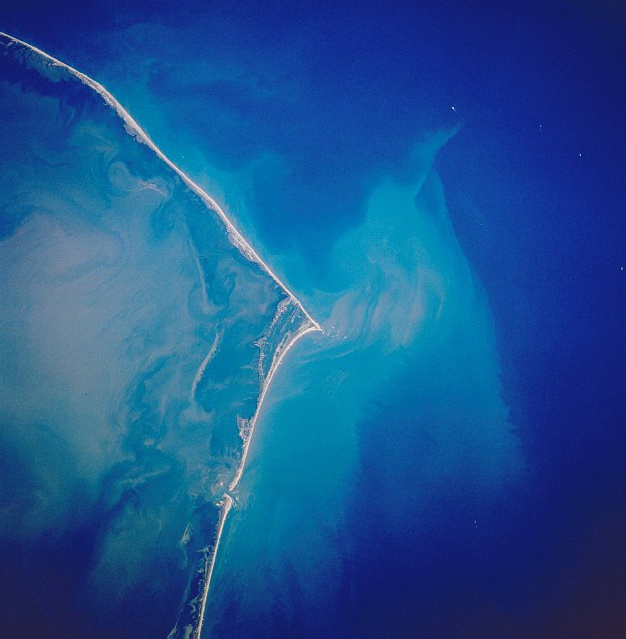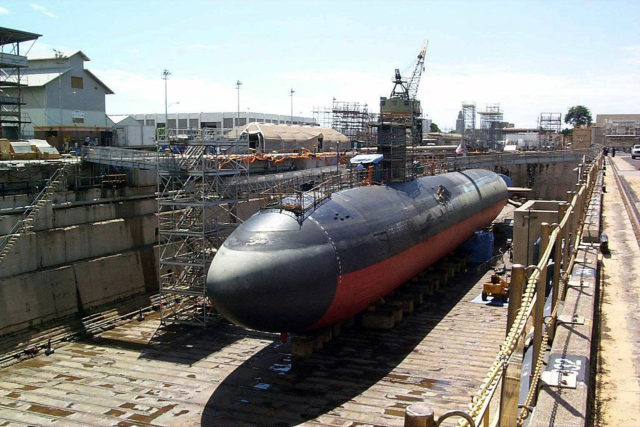The USS Alligator was the first known submarine of the United States Navy. But it wasn’t the first American submarine. That was the “Turtle,” a submarine built during the Revolutionary War.
The USS Alligator was built for wartime use during the American Civil War. The ship was launched May 1st, 1862, just seven months after it was ordered by the Union North. The ship was lost in an attempt to take over Charleston, South Carolina the following year.
Development
In late 1861, the US Navy hired Neafie and Levy to build a ship that could go underwater. It was designed by the French engineer Brutus de Villeroi.
The Navy was looking for something to combat the Confederates’ new vessel, the CSS Virginia, a steam-powered ironclad warship that was basically able to withstand all gunfire (due to its iron plating), making it tough to destroy with anything other than heavy weaponry.
The USS Alligator was built at the Philadelphia shipyard and was to be finished in 40 days. Initially, progress was quick, but it ended up dragging on for over six months, with a price tag of around $14,000. The USS Alligator was officially launched on May 1st, 1862. It got its name from its color, which was green.

The submarine was made of iron and had small glass windows for light. Reports vary on the length of the submarine, but most agree that it was either 30 feet or 47 feet long, with a diameter somewhere between 4-8 feet. It is believed that the USS Alligator could have 17 men total on board, but some say this number is more like eight crew on board.
Getting air from the surface via two tubes that were attached to floats, the air would then circulate through an air pump. It featured two crude air purifiers, which used chemicals to produce oxygen while forcing air through a system to be cleaned. This made it the first submarine to have an air purifying system. The submarine also had an airlock and thus was the first operational submarine that would allow a diver to leave the vessel and come back without coming to the surface. This is important, as it allowed divers to plant mines on other vessels and detonate them from within the submarine.
The USS Alligator used a propulsion system that included 16 paddles that were to be powered by hand. When the US Navy realized the disadvantages of the propulsion system in place, they quickly ordered for them to be replaced. So in 1863, the Washington Navy Yard replaced the paddles with a hand-cranked propeller. This increased the speed of the vessel from 2 knots to 4 knots but also allowed it to go as quickly as 7 knots.

The USS Alligator‘s first trial was ultimately a failure. Under the command of Samuel Eakins, who was a civilian, it was sent to the James River in Virginia, where a battle was currently going on. Its primary goal was to destroy a bridge which ran over the Appotomax River as well as clear any debris in the James River that could hinder ship travel through the area. Unfortunately, neither the James River or the nearby Appotomax River were deep enough to for the submarine to pass through. While the submarine could have gone partially above water through the rivers, this would have been to risk capture by the Confederates.
After this blunder, the vessel was sent back to the Washington Ship Yard where it underwent further testing. By the time this was finished, the CSS Virginia had already been destroyed, but there was a new ironclad in town, the CSS Virginia II. The Navy brought on Lieutenant Thomas Selfridge to command the ship. Selfridge was promised promotion to Captain if he destroyed the CSS Virginia II.
More testing began, this time with the new crew onboard. Through test runs on the Potomac River, the Navy found the USS Alligator to be underpowered. During one practice run, the submarine’s air became unbreathable. The entire crew tried to escape through one hatch, which proved difficult, and Selfridge declaring the ordeal a failure. Because of this, the crew was reassigned to a different vessel, and the goal of destroying the CSS Virginia II with the USS Alligator was abandoned.

Fate
Following this string of failures, the submarine had its oars replaced with a new hand-cranked propeller. This had a positive effect on the USS Alligator, allowing it to go faster. Though the upgrades helped the submarine, it would never see a battle.
The USS Alligator was ordered to Charleston, South Carolina to take part in the Capture of Charleston. It was once again commanded by Samuel Eakins, and had to be towed to Charleston by the USS Sumpter. The pair left Washington on March 31st, and on April 2nd ran into a raging storm off the coast, which led to the USS Alligator having to be cut from the USS Sumpter.
The USS Alligator was never seen again. It was cut adrift off Cape Hatteras, North Carolina, and is regarded as “lost at sea.”
Searches For the USS Alligator
In recent times, organizations have teamed up to search for the United States Navy’s first submarine. In the mid-2000s the National Oceanic and Atmospheric Administration organized several searches in partnership with the Office of Naval Research. The searches were held at varying times of the year and were focused around the “Graveyard of the Atlantic,” the assumed area where the submarine went down. The searches came up with nothing.

While the submarine could be written off as an overall failure, it led the way for the submarines we see today, revolutionizing submersible vessels.
